In general, guitar cables can’t be used for vocals because they’re usually different from each other, with the former typically utilizing an unbalanced design consisting of a TS construction (tip-sleeve), whereas a vocal cable often uses the XLR male-to-female input and output.
What’s the difference between a guitar cable and a cable for vocals?
As I just mentioned, guitar cables are TS cables, which means tip-sleeve, whereas a cord for microphones is different. So let’s look at its components.
In the image below, you can see what a guitar cable looks like.
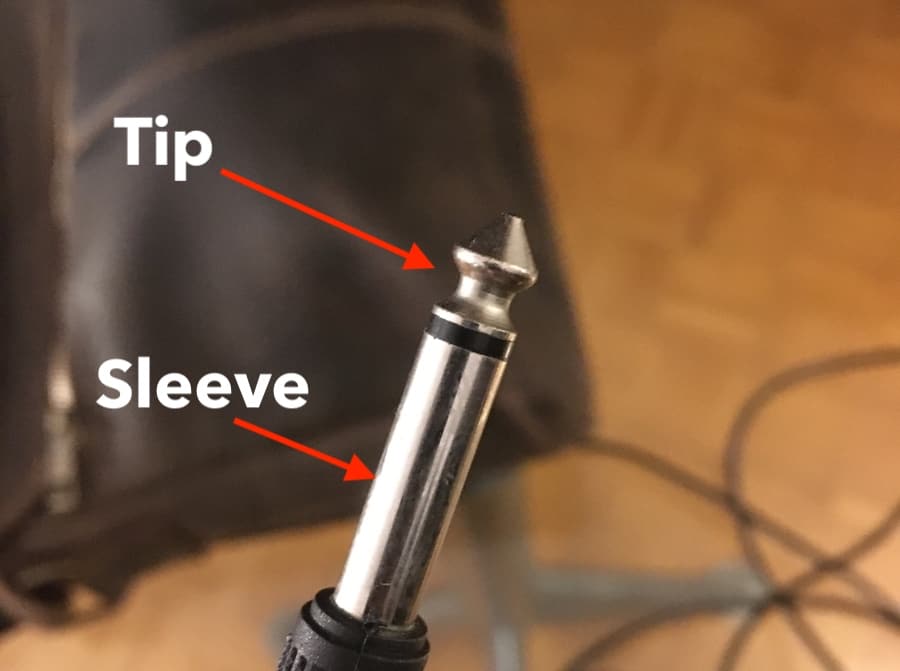
A microphone cable is quite a bit different, which you can see in the image below.
Microphones usually use an XLR cable, which has the male side, the side with all of the prongs, and then the female side, the side with all of the holes.
There is the ground wire, which grounds the signal, and then the hot and cold signals, which are reversed in polarity, resulting in a balanced signal.
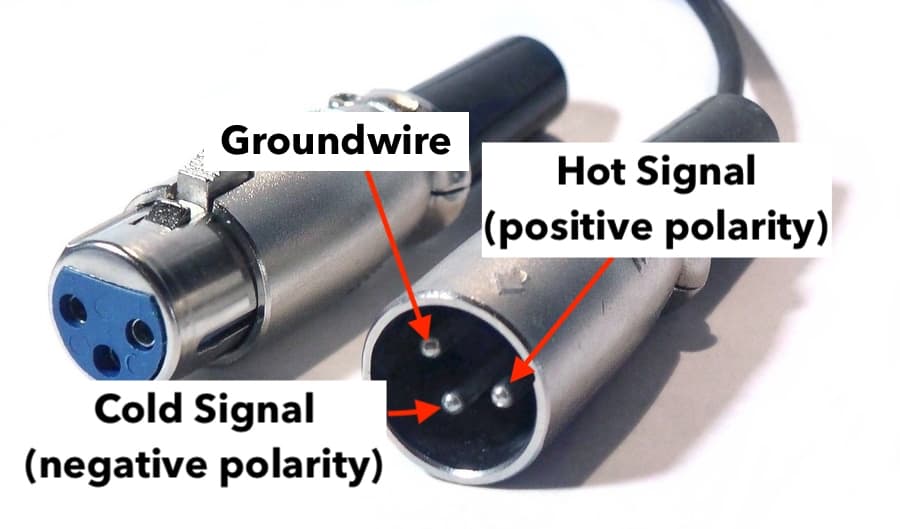
A guitar cable usually has five key pieces to it, including the outer jacket, a braided copper shield, an electrostatic shield, the insulation surrounding the wire, as well as the center conductor, which is the primary wire that carries the audio signal. It’s commonly called the “core wire.”
Let’s look at each one of these parts individually:
1) Rubber/Fabric Jacket
The outer jacket is the rubber or the material that protects all of the parts. It’s the outside of the cable, the part that is shielding the inner components.
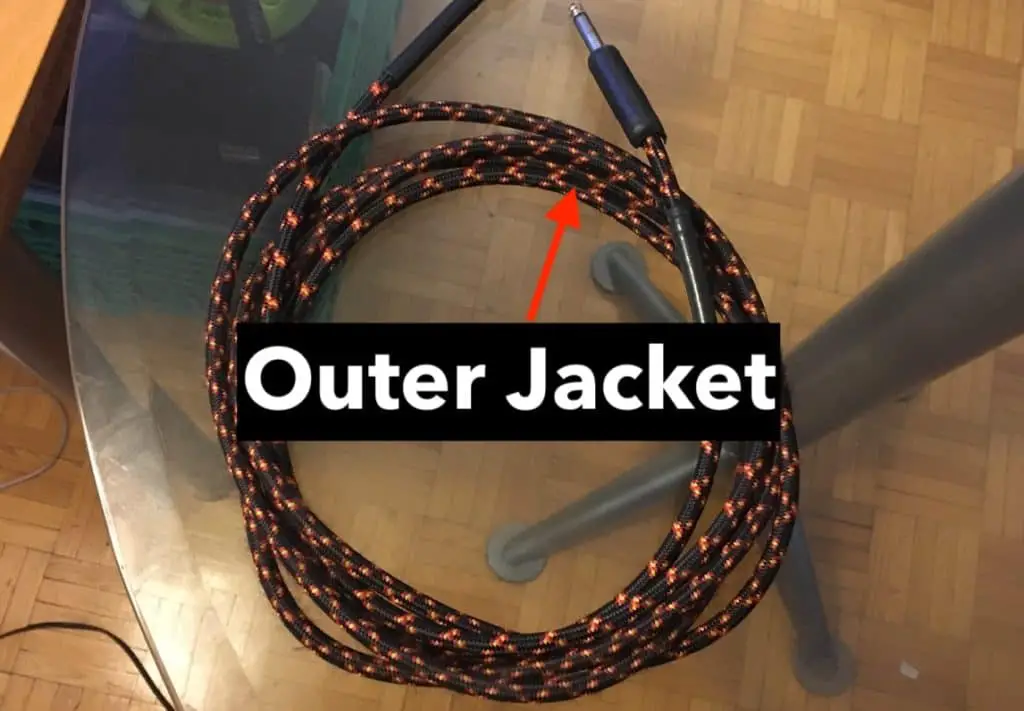
2) Core Wire
The main wire, which is also called the center conductor, is the primary wire that runs through the cable, and its main function is carrying the audio signal from one end to the other.
It’s commonly wrapped in copper wire, and a premium cable typically uses what’s called a “braided shield” design, which means it’s not only wrapped in copper wires, but those wires are braided so the shield is more solid and effective.
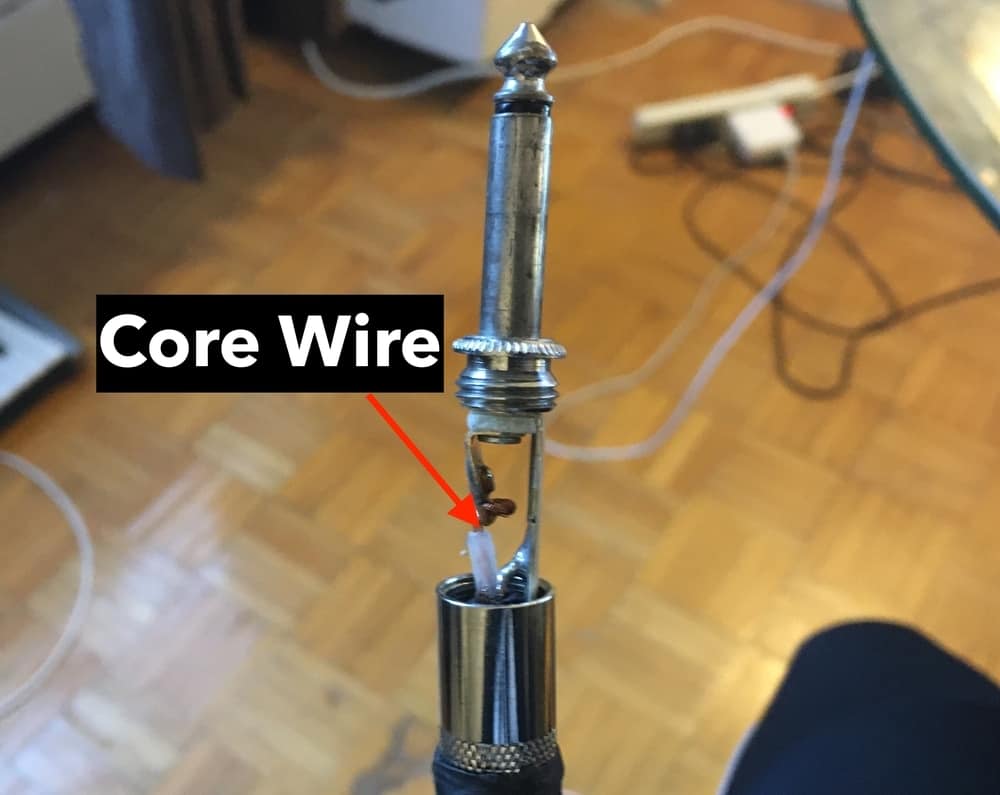
3) Outer Shield
The other shield, which is called the electrostatic shield, is the part of the shield that thwarts all kinds of noise that occurs when the cable is bent in some way or another.
If you take a look at the image below, you can see the metal casing which stops the cable’s main components bending at the point where it’s the most vulnerable.
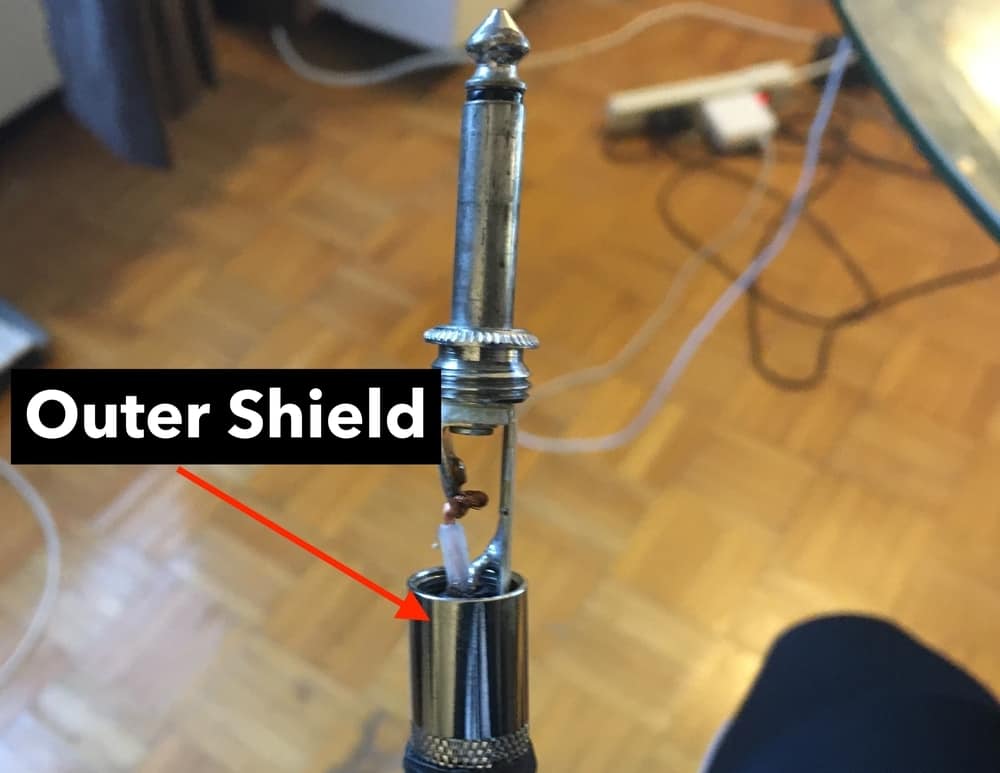
4) Copper Shield
The copper shield comes in a number of different forms, including a regular shield that’s typically much cheaper, and also doesn’t work as well, and then a braided copper shield.
In my article on whether guitar cables can cause buzzing, I reached out to someone from the manufacturer, Yorkville, who then sent me an email and told me the difference between a stranded cable design and a braided wire design.
As I mentioned in passing above, the stranded cable design is one where thin copper wires are wrapped around the core wire, also called the main conductor wire, in comparison to the braided wire, which is a bit different, in the sense that all of the copper wires are wrapped up together and then used to surround the core wire.
It’s not hard to imagine why this form of shield is superior, because it’s braided and thus, a lot stronger.
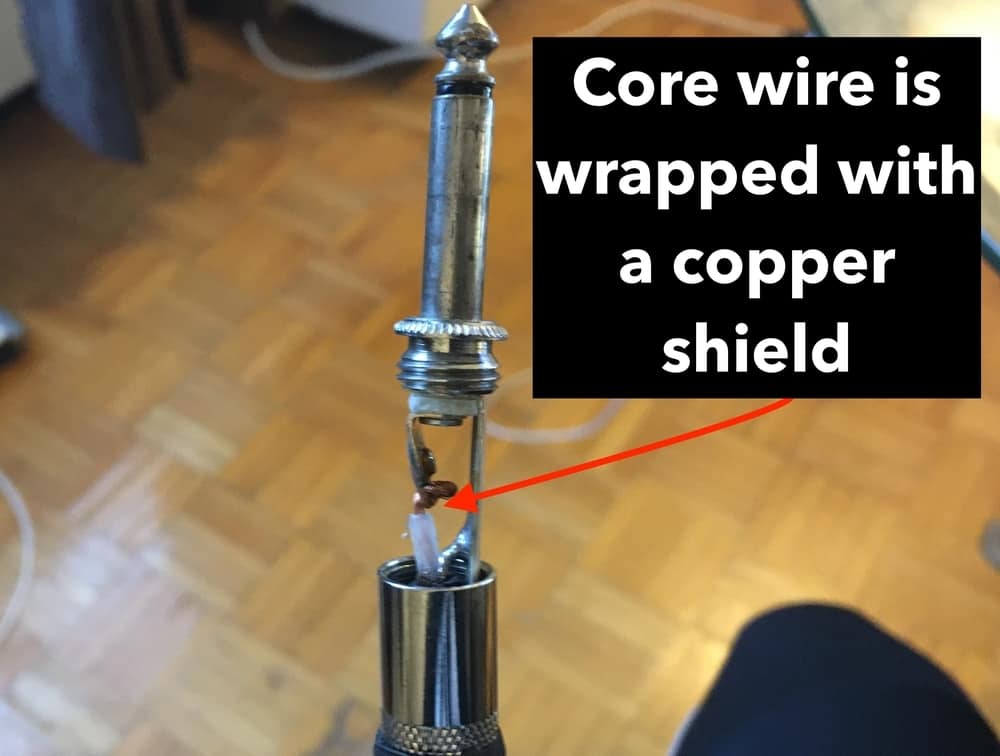
5) Insulation
The insulation part of the guitar cable is the part of the cable that holds all of the parts apart from each other, that way there is no kind of interference or problems stemming from different segments of the cable touching each other.
It’s used to separate the components.
As I just mentioned in the explanation of stranded cable design versus braided wire design, the latter is typically more expensive than the other, just because more work has gone into actually solidifying the cable design’s process, and therefore, making a much better cable that protects from breakage and outside interference.
With that said, just because a cable is marketed as “premium,” doesn’t make it so.
For instance, there is a brand of cable out there that a lot of consumers use, and many people think it’s more superior to others.
However, audiophiles and other gearheads know it’s really not superior at all, and its reputation is just a consequence of fantastic marketing.
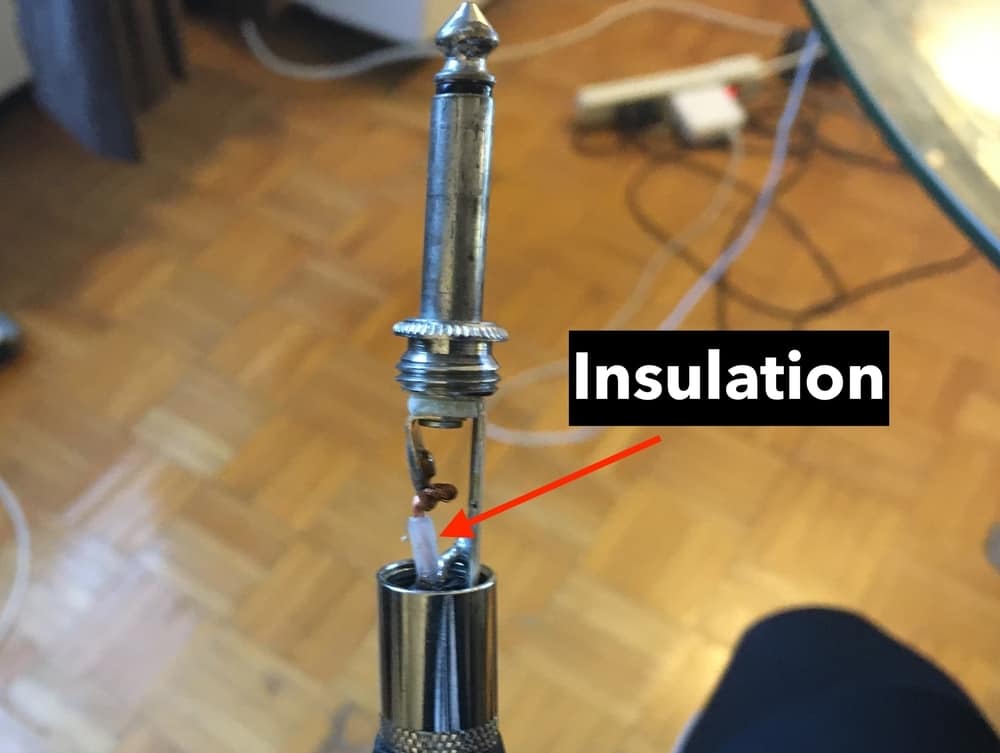
How is this different from a microphone cable?
As I said above, microphone cables are not the same as guitar cables. They’re different in a number of key ways, including the inner components as well as how they look. If you compare one to another, it’s quite easy to see the difference right off the bat.
For instance, the guitar cable looks a lot like what you see in the images near the beginning of the article.
It’s a TS cable, which means there are the tip and the sleeve, and that’s it. These cables are almost always unbalanced because they usually don’t need to be balanced.
The microphone cable, however, is a balanced cable, which means there is the main core wire, as well as another wire that’s in opposite polarity, in addition to the shield.
These cables are typically stereo cables, which means there is a right and left component.
Commonly, microphone cables are actually XLR cables, which means they have three prongs in them. In other words, there is the main prong, the shield, and the other prong which serves as the other side of the stereo field.
Moreover, microphone cables often have one side of it which is the male XLR jack and then the female XLR jack.
On the one side of the balanced XLR cable, you’re going to find one of two types of connectors, including the XLR female as I just mentioned, as well as the XLR male.
The XLR Male connects to a variety of hardware inputs, whereas the XLR female side of the cable connects directly to the microphone or other kinds of outputs.
The XLR male has three prongs, whereas the XLR female has three holes.
The TRS (tip-ring-sleeve, such as a headphone cable), however, connects to inputs and outputs.
Each prong of the cable serves a different purpose, including the positive signal, the negative signal, as well as the ground.
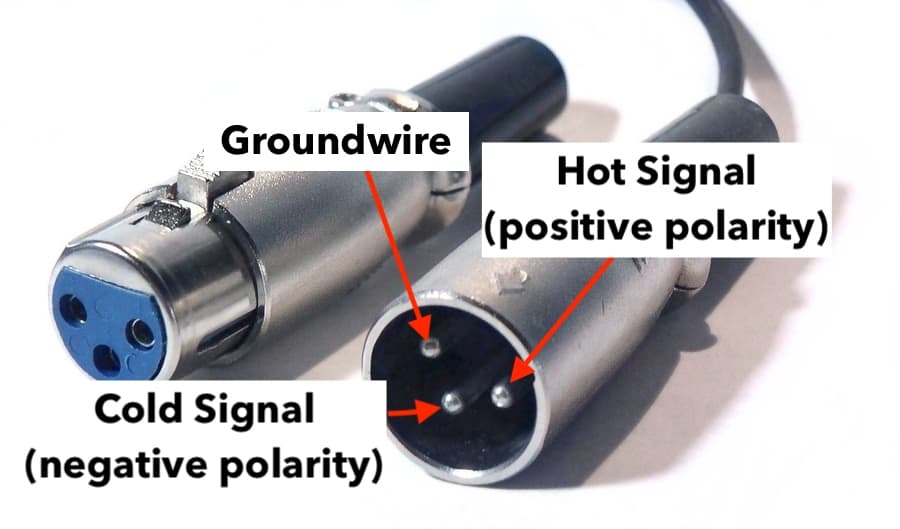
Earlier in the article, I explained that TS connectors are usually seen on varying kinds of instruments, with guitar and bass cables being the most common example.
These cables are unbalanced because there isn’t a wire that serves as the signal in opposite polarity.
In other words, a balanced cable has an additional wire that actually acts as a cancelation tool.
When the two signals get to the end of the wire, they are flipped and then a noise cancelation process occurs that’s called Phase Cancelation.
Phase cancelation means they’re both similar to each other, and one cancels the other out, and the consequence of this is eliminated noise.
YouTube Video
Conclusion
In conclusion, I hope you were able to walk away with a much clearer mind regarding what constitutes certain types of cables, as well as which one is used for instruments and vocals.
As you can see, there is a significant difference between a guitar cable and a microphone cable.
Guitar cables can almost never be used for a microphone, so if you’re in the market for a cable, you should definitely purchase a microphone XLR cable.
With all that in mind, there probably are other types of microphones on the market that utilize a different kind of connector, so don’t take everything above as gospel.

 Written By :
Written By :